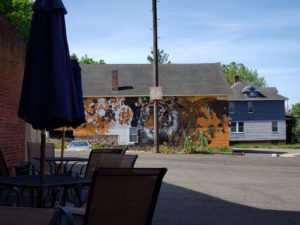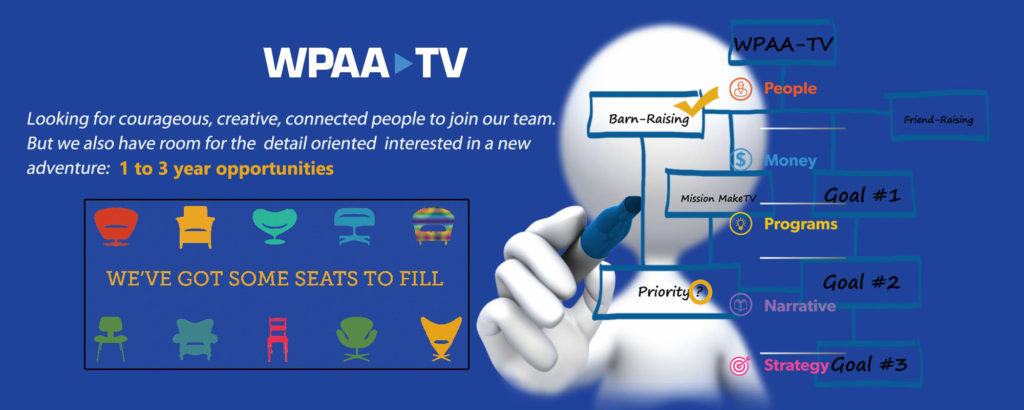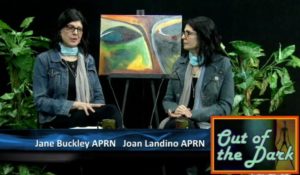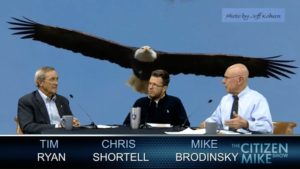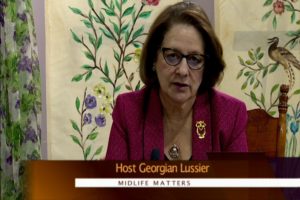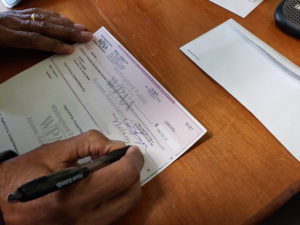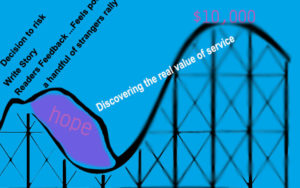Sharing #MyGivingStory now seems the right choice as I may be at the halfway mark in my service journey. What does over forty thousand hours of service in one’s adult life mean beyond being a lifestyle? What if I do what I am doing now for twenty consecutive full-time years? What can I resurrect from scraps of recall that can reveal the challenges and gifts of a lifestyle of service that forgoes a paycheck?
I certainly knew 65 was old when age ten, today – not so much.
As we begin to forget more than we know, it becomes clearer that what holds us to our own meaning are the stories we choose for our narration. I have come to realize I have abandoned much of my story.
I see silence as a dance partner with evil, yet I have indulged in it often to survive. Much of my service has been a light under a basket. Oddly, I run an organization whose mission is tied to transparency and the telling of stories.
Our world is full of enigma. Many of my stories of service are not told in order to avoid public feelings of shame or stigma as they are shared stories of struggle or tragedy experienced with others. I have been the shelter, the shoulder, the coach, the mother, the underwriter, the connection, the opportunity maker, the report, the pocket change, the ride or the facilitator of dreams come true.
As a girl born in the 1950s into a large family of laborers, I found myself taking risks with life and yielding much to serendipity. I deeply value the laborer’s sense of hands-on accomplishment and marvel at the gifts of kismet.
My steady diet of embracing service via civic engagement as a lifestyle began with my two-year enlistment in VISTA in 1978. In 2011, I retired from a paycheck to what my dad called my life’s job. I live on a poverty-level stipend which I pay myself from a short-circuited retirement savings. I run a community media center and do a bit of social service on the side.
There is an abundance of past stories in so many venues such as those connected to Criminal Justice and nineteen years collecting toys and personal hygiene products for prison chaplains; Fair Housing which included three years of weekends finding housing and furnishings for families temporarily in hotels in the 1980s; Voting Rights and Environmental Justice as President of the League of Women Voters of New Haven and other service in Arts and Humanities.
My impact is accomplished one story or project at a time: new skills, forever mates, a job, a friend, a new perspective, a place to live, a new language, a movie made, a fear overcome, a new passion discovered, a network created, a hashtag connection, a song that gets a whole room singing, a gallery of #SocialActionArt, a mural, and a blue penguin that is a metaphor for civic engagement by whoever walks in the door at WPAA-TV thereby enabling a TV station to be #MoreThanTV
The range of impact is immense. Our core service of TV connects viewers to wide-ranging ideas. Our open doors have inspired some to make life decisions. Unexpected encounters such as court-mandated community service or a get well video message have changed lives. A family said the happiest six weeks of a retired radio announcer’s life were his last, those spent with us making his show “A Face for Radio.” Several differently-abled proved themselves in ways they could not imagine. A few veterans renewed their service with us. A photographer has an exhibit and a book deployed to help the food and housing insecure. It made the news. A muralist literally explored new heights and became known as among the best in the world. A guest on a show about midlife decided to embody a transition to ‘memoir artist.’ A recovering alcoholic stabilized to become an exceptional math tutor; an actor performed on stage sober for the first time with a theater company that gave him a new start. More stories are experienced and shared each day.
Any topic is fair game, from Creation Station, a show featuring a four-year-old, to teens interviewing folks from all walks of life about first jobs. Subject matter ranges from how to raise bees, make a pumpkin martini or hummus, and the evolution of women in the trades. Among the challenging topics are guns, terror, identity, taking a knee, recovery of all kinds, stigma, faith, and commentary on local issues. As the gatekeeper for resources, trainer for the tools, a technician in the studio, set designer or just a person to work out ideas, I have influenced the creation of over 5,000 shows in the past five years and curated and processed nearly 30,000 more. My practice is to actively listen, boldly suggest and show.
My ADHD life is a good match for Community TV. I get to support literally hundreds of organizations and people of diverse interests and talents and explore #SocialActionArt which is my passion.
When people hear that I do not get paid they assume I am married to a wealthy man. That would be so if counting grandchildren is a sign of prosperity. Being his life jacket is among the thousands of stories I have experienced with a different kind of love. We live in a home too big for two, that has sheltered dozens of people in need of transitional housing. One transitioned to heaven.
My conviction is that everyone needs to be digitally literate. I strongly urge others to watch how media can be reconfigured, and remind advocates that gavel-to-gavel is great for archives but not so great for connecting with people for action. Editing is a ‘power’ tool that community media users need to get better acquainted with.
I have had and even edited, numerous conversations with individuals recently retired. Those comfortably retired love the flexibility this time of life affords. Most are looking for purposeful ways to contribute be it caring for grandchildren, stacking food donations or cleaning up the river. I have no need to look because purposeful and story-full opportunities find their way to me, daily.
I cannot tell or truly express what it is like to see someone realize they are award-winning or published, or exhibited or connected to their own story, or more importantly, survivors of their own story. Chunks of my personal journey story are shared on two blogs. ‘Glimpses Through Stained Glass‘ is under the pseudonym Adele Houston and the other is this WPAA-TV blog.
In one post I shared: I retired from a paycheck to what my dad considered my life’s job. I recall a conversation he started with his poke, “You’ve finally decided what you want to be when you grow up,” to which I replied, “Yes, a thorn.” Because I may have just a day or perhaps a few decades to be that thorn, I embrace my civic life fully.

PS: My little station won Best in the USA for its size in 2019.

